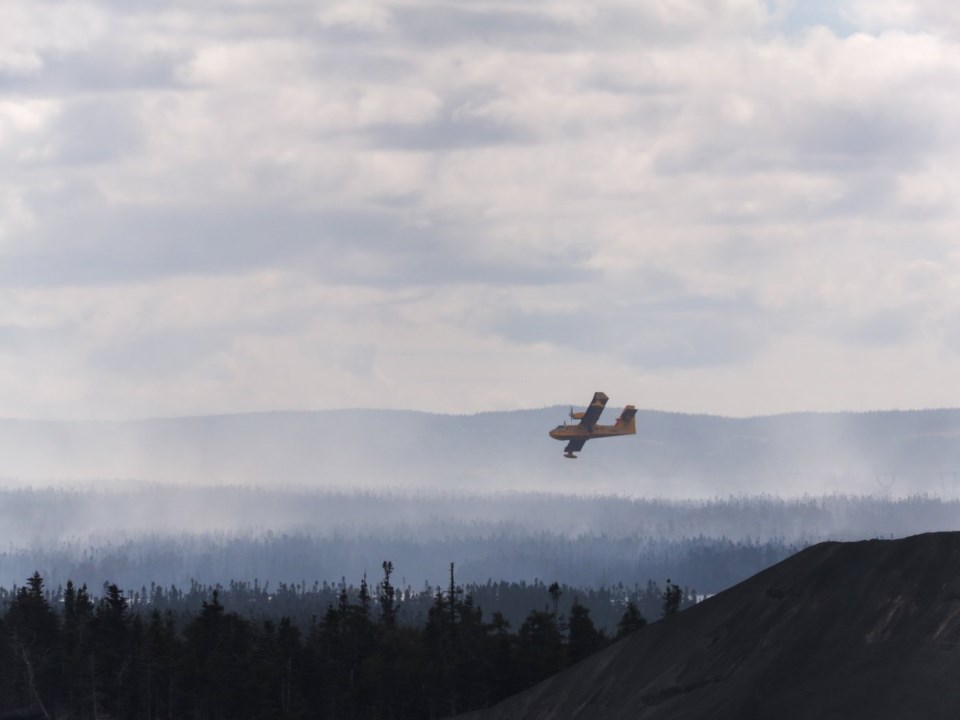ST. JOHN'S — A Newfoundland community's water supply temporarily ran dry over the weekend amid parched conditions that have fuelled wildfires and prompted several towns to restrict water use.
Roger Snook, mayor of Sunnyside, N.L., said the taps went dry on Saturday, after the town's water reservoir ran empty during a summer of abnormally dry conditions and stretches of searing heat. He and four other volunteers worked all day Sunday to pump water from a pond back into the reservoir to get the town's taps running again.
"This is the first time in Sunnyside history that this has ever happened," the mayor said in an interview. "Mother Nature is playing with us at her best."
Other towns in eastern Newfoundland have advised residents to stop using water for non-essential reasons such as washing their cars. Last week in Bonavista, the town council outright banned such use.
"This is not a precaution — it’s a necessity," town officials said in a social media post on Aug. 13. "If water usage does not decrease immediately, there is a high potential that all community water services will be temporarily shut off to conserve our remaining supply."
Several months of above-average rainfall or snowfall are needed to avoid a repeat of this summer's parched conditions, said Eddie Sheerr, a meteorologist based in St. John's. The city has received about 43 per cent of the average rainfall for June, July and August, he said in a recent interview.
"The winter was relatively snowless across much of the province," he said. "And typically throughout May and sometimes June, we get these foggy dam patterns, which we didn't really have a lot of."
Normally, the summer air is hot and humid. This year, there was barely any moisture, coupled with several days in a row with temperatures above 30 C, he said. The dry conditions and gusty winds were perfect fuel for a wildfire season that began in May and was still going in the later weeks of August.
"We are due for a heavy (snowy) winter and hopefully it's this year," he said.
Much of Atlantic Canada has seen below-average rainfall this summer, leaving the soil parched deep below its surface, said Sara Sadri, an associate professor with the University of Prince Edward Island's School of Climate Change and Adaptation.
The conditions are part of a broader pattern driven by climate change, she said.
Sadri agreed that Newfoundland and Labrador — and the rest of Atlantic Canada — will need a sustained period of above-normal precipitation to recover from this unusually dry summer. But climate change is driving more frequent swings between very wet and very dry conditions, with more precipitation falling over short periods from large storms. In heavy downpours, much of the water is lost to run-off, and less is absorbed into the ground to replenish the soil, she said.
"A steady situation is what we really need," Sadri said. "A cooler winter with gradual snow melt in the spring would also support a recovery."
Governments should expect more dry conditions in the summer and keep an eye out for them so they can prepare, she said.
She suggested provincial governments invest in regional, high-resolution satellite data for drought monitoring. The federal government maintains the Canadian Drought Monitor to offer a national overview, but its data is typically a month old, she said.
Local and provincial governments can be better prepared for drought by adopting practices to retain moisture in the soil, such as covering soil important for growing crops. They can also start collecting and storing rainwater, she said.
"Having extra water in reservoir somewhere is very important," she said.
This report by The Canadian Press was first published Aug. 21, 2025.
Sarah Smellie, The Canadian Press



